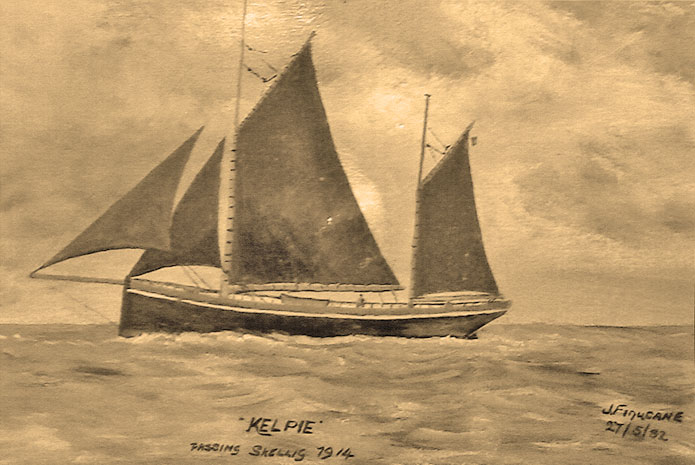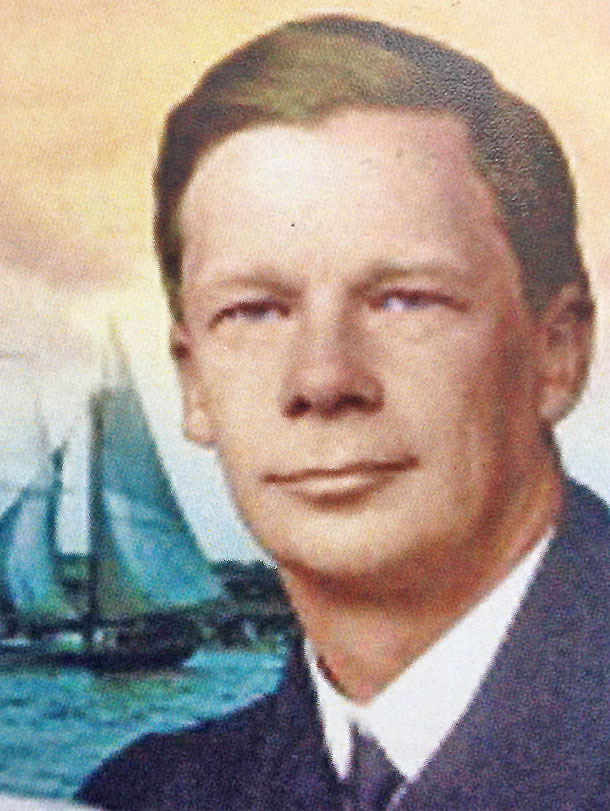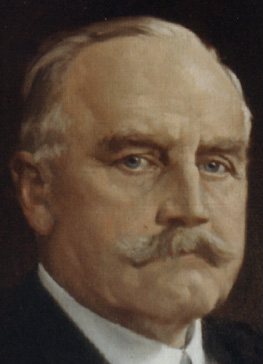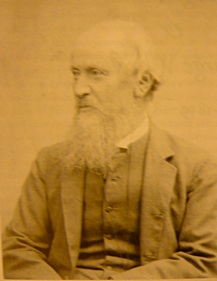Limerick's 1914 Gun-runners
at Limerick's Pop Up Museum
7:30pm Wednesday 13 August 2014
WWW version:
- January 1913: Ulster Volunteer Force founded
- Tuesday 25 November 1913: Irish Volunteers launched
- Friday 5 December 1913: Royal Proclamation published in The London
Gazette prohibiting, under the provisions of the Customs Consolidation
Act, 1876, the importation of arms and ammunition into Ireland
- Saturday 25 April 1914: Larne gun-running
- Friday 8 May: Committee meets at Alice Stopford Green's house in
London
- Monday 25 May: House of Commons passes Third Home Rule Bill (Government
of Ireland Act 1914)
- Sunday 28 June: Archduke Ferdinand assassinated
- Monday 29 June: Kelpie sets sail from Foynes
- Sunday 12 July: 1500 rifles loaded on Gladiator at Hamburg; 900
rifles transferred to Asgard and 600 rifles transferred to
Kelpie near the Ruytigen lightship in the North Sea off the Dutch
coast
- Saturday 25 July: Kelpie's cargo transferred to Chotah in
St. Tudwell's Roads, twenty miles west of Bardsey Island in Cardigan
harbour
- Sunday 26 July: 900 rifles landed at Howth by Asgard
- Tuesday 28 July: Austria declares war on Serbia
- Sunday 2 August: 600 rifles landed at Kilcoole by Chotah
- Monday 3 August: United Kingdom of Great Britain and Ireland declares war
on Germany
- Monday 3 August: General Sir Thomas
Kelly-Kenny proposed as a leader for the Irish Volunteers by Sir Thomas
Myles
- Friday 18 September: Government of Ireland Act 1914 and Suspensory Act
1914 received the royal assent, so the former was never put into
operation
- counterblast to the Larne gun-running? (Diarmuid Coffey, BMH witness
statement)
- for volunteers "restive for the lack of arms"? (Tim Donovan, p.116)
- for show?
- for publicity?
- for presentation to senior nationalists, like John Daly of Barrington
Street? (See 1916
monument)
- against the Unionists?
- against the Germans?
- against the British? (1916 Rising)
- Even Conor O Brien was uncertain:
"I, to be in the fashion, had put my yacht at the disposal of the
other side. If I were asked which other side, I should have to admit that
I knew as little as my employers did, so obscure were Irish politics in
1914; by the other side I mean not Ulster."
- Asgard (51ft. 27.5 ton gaff rigged cutter, now on permanent
display in Collins Barracks, Dublin)

- Kelpie (26 ton ketch, built in 1871, ran ashore on the Scottish
coast and was wrecked in 1921)

- (Edward) Conor Marshall O Brien (owner) (b. England)
- Kitty O Brien (his sister) (b. England)
- (Hugh)
Diarmuid James Coffey (b. Dublin)
- George Cahill (b. Limerick)
- Tom Fitzsimons (b. Limerick)
- Hervey de Montmorency (boarded at Cowes, left after one night!)
- Chotah (48 ton, 60 ft. cutter, engine powered)
- Sir Thomas Myles (owner) (b. Limerick)
- James Creed Meredith (b. Dublin)
- Hervey de Montmorency (b. Gibraltar)
- George Cahill
- Tom Fitzsimons
Myles's own description:
the Chotah was 60 ft. overall, straight stemmed, 14 ft. beam.
She carried relatively more canvass but in a breeze when on a wind the
side of the dining table was one moment on a level with your nose and the
next in your lap.
The Limerick people aboard
Conor O Brien and Kitty O Brien were siblings.
Mary Spring-Rice was their second cousin.
All three were greatgrandchildren of Thomas Spring-Rice, 1st Baron Monteagle
(1790-1866), whose statue stands in the People's Park, Pery Square:


Conor O'Brien (1880-1952)

- the O Briens' London residence was 24 Roland Gardens
- John Nicholas Walsh in his recent memoir recalls his first meeting with
Conor O Brien, shortly after he moved to Foynes in 1927:
`When he sailed into Foynes I was anxious to see the hero and when he
moved to the quay, presumably to take in supplies, I was there. What a
shock! No one had warned me of his infamous temper. Of all the
foulmouthed sailors he must have been the King; a far cry from the modest
heroes of my schoolboy reading; I left after a few minutes. Years later
when I came across his book Across Three Oceans the first few
chapters brought back the recollection and I abandoned it, although I did
read and enjoy it later.'
- biographies have been written by Judith Hill (In Search of Islands: A
Life of Conor O'Brien) and by Pádraic de Bhaldraithe (Loingseoir na
Saoirse)
- sailed his yacht Saoirse around the world, south of the three
capes, in 1925.
- married Kitty Clausen in 1928
- buried at Mount Trenchard
Kitty O'Brien (1885-1951)

- mate and cook aboard Kelpie
- not to be confused with her sister-in-law, also Kitty O'Brien, née
Clausen
- buried in Mount Jerome, Dublin
Mary Spring-Rice (1880-1924)

George Cahill (1888-1921)
- of Barracks Cross
- 1901
1911
- later became a merchant seaman
- died of malaria in 1921
Tom Fitzsimons (1894-c1970s)
- of Foynes Island
- 1901
1911
- lived to a great age
- loved to sing the local Kelpie ballad composed in Foynes many years
later.
Sir Thomas Myles (1857-1937)


- A generation earlier (1848), Shaw was present in the rooms of John
Kells Ingram (1823-1907) in House 30 in Trinity on the night when the
latter wrote The Memory of the Dead, better known as Who fears to
speak of '98
- He was briefly the first editor of The Irish
Times in 1859
- Shaw's recent tutees had included Bram Stoker (1847-1912)
- G. F. Shaw should not be confused with his apparently unrelated
contemporary George Carr Shaw (1814-85), father of George Bernard Shaw
(1856-1950).
- Not surprisingly, they were confused in their lifetimes, by the local
laundry.
- The two unrelated families got to meet each other as the laundry company
mixed up the delivery so the Shaws of Synge Street got the sheets of the
Shaws of Harrington Street
- The Home
Government Association was launched by Isaac Butt on September 1,
1870.
- Besides Butt, the principal persons involved in the Home Government
Association, all of them Irish Protestants, were Shaw, soon to be tutor to
the Myles brothers; Major
Laurence Knox, founder of The Irish Times and E. R. King Harman,
from a leading landlord family.
- By November 1873, there had been behind-the-scenes contacts between
Fenian sympathisers, the Catholic Church and the Home Government
Association.
- Following a meeting called for by Dr. Keane, the Catholic bishop of
Cloyne, and held in Dublin, there emerged a new body to replace the old
Home Government Association.
- This new organisation, which enjoyed Fenian and Catholic support, was the
Home Rule League
- Both Myles brothers shared sporting skills and interests (rowing,
sailing, swimming, rugby, boxing, shot put, etc.)
- Thomas's medical degrees conferred 1880 and 1881
- resident surgeon in Dr. Steevens's Hospital from 1881 to 1884; later
associated with Jervis Street and Richmond hospitals
- On Saturday, May 6, 1882, Dr. Thomas Myles, just turned 25 years of age,
was summoned from Dr. Steevens's Hospital to the Phoenix Park to attend to
the newly-sworn in Chief Secretary for Ireland, Lord Frederick Cavendish,
and his Permanent Undersecretary, Thomas Henry Burke, who had been stabbed
in broad daylight by the Invincibles.
- Myles was one of six doctors who performed the post mortems - in the
present U.S. Ambassador's Residence.
- A new organisation, the Irish Protestant Home Rule Association, was
founded on May 21, 1886, in the Castle Restaurant in Belfast's Donegall
Place.
- On June 23, 1886, Dr. Myles was involved in the noisy inaugural meeting
of the Dublin branch of the Irish Protestant Home Rule Association, held in
the Central Hall, Westmoreland street.
- On April 21, 1888, at St. Peter's Church in Dublin, he married Frances
Elizabeth (Fanny) Ayres, daughter of a deceased English-born clergyman and
landowner, Rev. George Ayres (1825-1881) [Certificate].
- Lady Myles's greatgrandmothers included a Sarah Hely of King's County mentioned
in the Marriage Licence Bonds of the Diocese of Killaloe for 1777
- Barack Obama's GGGGGGgrandmothers included a Sarah Hely of King's County
mentioned
in the Marriage Licence Bonds of the Diocese of Killaloe for 1761
- first residence 30
Harcourt Street
- M.D. conferred later in 1888
- Professor of Pathology, RCSI, 1889-97

- By 1899, moved to 33
Merrion Square
- In 1899, Dr. Thomas Myles was elected to hold the office of President of
the Royal College of Surgeons in Ireland for a three-year term,
1900-1902.
- libel action and injunction against his fellow candidate Fitzgibbon who
claimed that Myles's association with the nationalist United Irish League
(U.I.L.) would 'associate the college with the promoters of anarchy and
discord.'
- Honorary Freeman of the City of Limerick in 1900, during the three-year
Mayoralty of John Daly, on account of his medical achievements. The others
so honoured under Daly were Thomas J. Clarke (soon to marry Daly's niece),
James F. Egan and Maude Gonne.
- Along with Vincent Nash, the High Sheriff of Limerick, Thomas Myles was
one of two Limerick men awarded knighthoods (Kt. Bach (1902)) in King
Edward VII's coronation honours list, announced on June 26, 1902.
- After the gun-running, Sir Thomas Myles (like his older brother Jack)
joined the Royal Army Medical Corps.
- named on a plaque listing members of the
Limerick Protestant Young Mens' Association who took part in the Great War,
1914-1918 'For King and Country'
- on duty in Dublin at Easter 1916; briefly taken prisoner according to
Witness Statement by James Clarke, who once brought Austin Stack to him for
treatment for a football injury
- did not allow any of the wounded to fall into British hands, except
one
- in 1917, gave medical evidence at the inquest on Thomas Ashe, according
to Witness Statement by Kevin O'Shiel
- After Matt Brady (father of Ruairí
Ó Brádaigh) was shot and wounded in Longford on April 29, 1919, he was
transferred to the Richmond Hospital, where according to Seán MacEoin's
Witness Statement:
Dr. Michael Burke and Sir Thomas Myles took care of him till the Truce,
many times locking him into presses and other places of concealment when
the place was being searched by Black and Tans and other British
forces.
- signed a memorial to the Prime Minister, published in The Times on
May 12, 1921, containing a new peace proposal
- By 1932, moved to 32
Leeson Park
- continued to pursue his professional duties and met the demands made upon
his services until he was in his mid-seventies
- died in the Richmond Hospital, July 14, 1937
- buried at Dean's Grange with Lady
Myles
- Only the Irish Press obituary mentioned his gun-running exploits:
“No One More Nationalist”: How Sir Thomas Myles Risked His
Position For The Cause
- For probate purposes, his seventy-ton ketch Sheila was worth more
than his home at 32 Leeson Park; a neighbouring house (no.26) sold for
€6.5 million in 2007.
On the beach at Kilcoole, a bronze plaque on a granite boulder reminds the
visitor of the events that took place there in 1914. Sir Thomas Myles is named on the
Kilcoole monument.
Mount Trenchard Memorial Committee
- John Cussen (Newcastlewest, chairman)
- Tom Toomey (Castletroy, secretary)
- John Curtin (Ballyhahill)
- Seán Diffley (Foynes)
- Tim Donovan (Rathkeale)
- Tom Donovan (Clarina)
- Liam Dundon (Foynes)
- Patricia Haselbeck (Lisnagry)
- Seán Liston (Knockaderry)
- Denis Nolan (Ballyhahill)
- Seán Nolan (Ballyhahill)
- Pádraig Ó Ruairc (Newcastlewest)
- Seamas O'Sullivan (Broadford)
- Paddy Waldron (Killaloe)
Provisional date for unveiling of monument: 2p.m. Sunday 21 September
2014.
Fundraising is ongoing.
Commemorative scrolls available from any committee member (suggested
donation € 20).
Booklet to be published. More information on the gun-running participants
welcome.









